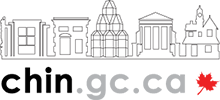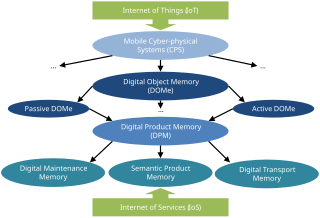In object-oriented programming, a class is an extensible program-code-template for creating objects, providing initial values for state and implementations of behavior. In many languages, the class name is used as the name for the class, the name for the default constructor of the class, and as the type of objects generated by instantiating the class; these distinct concepts are easily conflated. Although, to the point of conflation, one could argue that is a feature inherent in a language because of its polymorphic nature and why these languages are so powerful, dynamic and adaptable for use compared to languages without polymorphism present. Thus they can model dynamic systems more easily.

Max, also known as Max/MSP/Jitter, is a visual programming language for music and multimedia developed and maintained by San Francisco-based software company Cycling '74. Over its more than thirty-year history, it has been used by composers, performers, software designers, researchers, and artists to create recordings, performances, and installations.

Learning Object Metadata is a data model, usually encoded in XML, used to describe a learning object and similar digital resources used to support learning. The purpose of learning object metadata is to support the reusability of learning objects, to aid discoverability, and to facilitate their interoperability, usually in the context of online learning management systems (LMS).

The Canadian Heritage Information Network is a special operating agency within the federal Department of Canadian Heritage that provides a networked interface to Canada's heritage institutions. It is based in Gatineau, Quebec, and is administratively merged with the Canadian Conservation Institute (CCI), another special operating agency of Canadian Heritage.
Simple Knowledge Organization System (SKOS) is a W3C recommendation designed for representation of thesauri, classification schemes, taxonomies, subject-heading systems, or any other type of structured controlled vocabulary. SKOS is part of the Semantic Web family of standards built upon RDF and RDFS, and its main objective is to enable easy publication and use of such vocabularies as linked data.
IMS VDEX, which stands for IMS Vocabulary Definition Exchange, in data management, is a mark-up language – or grammar – for controlled vocabularies developed by IMS Global as an open specification, with the Final Specification being approved in February 2004.
The Art & Architecture Thesaurus (AAT) is a controlled vocabulary used for describing items of art, architecture, and material culture. The AAT contains generic terms, such as "cathedral," but no proper names, such as "Cathedral of Notre Dame." The AAT is used by, among others, museums, art libraries, archives, catalogers, and researchers in art and art history. The AAT is a thesaurus in compliance with ISO and NISO standards including ISO 2788, ISO 25964 and ANSI/NISO Z39.19.
Knowledge Discovery Metamodel (KDM) is a publicly available specification from the Object Management Group (OMG). KDM is a common intermediate representation for existing software systems and their operating environments, that defines common metadata required for deep semantic integration of Application Lifecycle Management tools. KDM was designed as the OMG's foundation for software modernization, IT portfolio management and software assurance. KDM uses OMG's Meta-Object Facility to define an XMI interchange format between tools that work with existing software as well as an abstract interface (API) for the next-generation assurance and modernization tools. KDM standardizes existing approaches to knowledge discovery in software engineering artifacts, also known as software mining.
CAEX is a neutral data format that allows storage of hierarchical object information, e.g. the hierarchical architecture of a plant. On a certain abstraction level, a plant consists of modules or components that are interconnected. CAEX allows storage of those modules or components by means of objects. Object oriented concepts such as encapsulation, classes, class libraries, instances, instance hierarchies, inheritance, relations, attributes and interfaces are explicitly supported. CAEX bases on XML and is defined as an XML schema. The original intention of developing CAEX was to remedy industry's lack of a common and established data exchange between process engineering tools and process control engineering tools. However, CAEX can be applied to all types of static object information, e.g. plant topologies, document topologies, product topologies, petri nets. It can also be used for non-technical applications like phylogenetic trees.

Metadata is "data that provides information about other data", but not the content of the data, such as the text of a message or the image itself. There are many distinct types of metadata, including:
The Getty Vocabulary Program is a department within the Getty Research Institute at the Getty Center in Los Angeles, California. It produces and maintains the Getty controlled vocabulary databases, Art and Architecture Thesaurus, Union List of Artist Names, and Getty Thesaurus of Geographic Names. They are compliant with ISO and NISO standards for thesaurus construction. The Getty vocabularies are the premiere references for categorizing works of art, architecture, material culture, and the names of artists, architects, and geographic names. They have been the life work of many people and continue to be critical contributions to cultural heritage information management and documentation. They contain terms, names, and other information about people, places, things, and concepts relating to art, architecture, and material culture. They can be accessed online free of charge on the Getty website.

Europeana is a web portal created by the European Union containing digitised cultural heritage collections of more than 3,000 institutions across Europe. It includes records of over 50 million cultural and scientific artefacts, brought together on a single platform and presented in a variety of ways relevant to modern users. The prototype for Europeana was the European Digital Library Network (EDLnet), launched in 2008.

An application programming interface (API) is a way for two or more computer programs to communicate with each other. It is a type of software interface, offering a service to other pieces of software. A document or standard that describes how to build or use such a connection or interface is called an API specification. A computer system that meets this standard is said to implement or expose an API. The term API may refer either to the specification or to the implementation.

A digital object memory (DOMe) is a digital storage space intended to keep permanently all related information about a concrete physical object instance that is collected during the lifespan of this object and thus forms a basic building block for the Internet of Things (IoT) by connecting digital information with physical objects.
Kubernetes is an open-source container orchestration system for automating software deployment, scaling, and management. Originally designed by Google, the project is now maintained by the Cloud Native Computing Foundation.
AthenaPlus is a CIP best practice network started in March 2013 which aims to facilitate access to networks of cultural heritage, enrich metadata, as well as improve search, retrieval and re-use of Europeana’s content by enhancing multilingual terminology management and the export/publication tool. By the end of the project, AthenaPlus will contribute more than 3.6 millions of metadata records to Europeana, from both public and private sectors, focusing mainly on museums content. In addition to enabling access to cultural heritage, AthenaPlus is also focused on creative use of content, and adapting data to users with different needs by means of tools that support the development of virtual exhibitions, tourist and didactic applications.
Lightweight Information Describing Objects (LIDO) is an XML schema for describing museum or collection objects. Memory institutions use LIDO for “exposing, sharing and connecting data on the web”. It can be applied to all kind of disciplines in cultural heritage, e.g. art, natural history, technology, etc. LIDO is a specific application of CIDOC CRM.

The GigaMesh Software Framework is a free and open-source software for display, editing and visualization of 3D-data typically acquired with structured light or structure from motion.
The LinBi project ran between February 2019 and October 2020 as an EU-funded INEA-CEF project which focused on biodiversity and documentation of the variety of life on Earth. This diversity is preserved in a wide range of formats – books, illustrations, specimen scans, glass plate photographs, sound recordings, herbarium sheets, video and more. LinBi brought together botanists, researchers, the media and the public in a collaborative effort to enhance and support appreciation and use of European biodiversity material. The project has provided 1.3 million items of cultural heritage content to Europeana.








